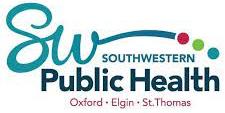2.1 Public Health in Canada
Health Definition
“The World Health Organization (W.H.O.) offers a simple definition of health as “a state of complete physical, mental, and social well-being, and not merely the absence of disease or infirmity”. “Social well-being” is an important aspect of this definition that may not always occur to us in thinking about our health” (Government of Canada, 2008).
Source: World Health Organization. (2023). Constitution.
Regulatory Bodies
Canada shares a vision for children and youth based on core principles of the United Nations Convention of the Rights of the Child (UNCRC), which is an international treaty regarding the rights of children under the age of 18.
UNCRC member countries agree that governments and adults have a responsibility to ensure a child’s right to survival, healthy development, and protection from harmful influences. Children also have a right to be protected from abuse and exploitation, as well as experience full participation in family, cultural, and social life (Government of Canada, 2011).
Canada as a nation is a member country of the United Nations and has adopted the Convention on the Rights of the Child. This membership informs the definition of health promotion for Canadians. The Public Health Agency of Canada is a collaboration between the Minister of Health, the Minister of Mental Health and Addictions, the Chief Public Health Officer, and senior leadership of the Public Health Agency of Canada (PHAC, 2023). DIrection is provided to the provincial Ministers of Health who work in collaboration with provincial health agencies to mandate legislation for local Medical Officers of Health. The local Medical Officer of Health is tasked with implementing a team of medical professionals to support health promotion in their local communities through public health units.
We often think of health promotion as pertaining to our physical health. Health promotion includes so much more than a singular focus on physical health. All humans have the right to live a healthy life, free from environmental hazards, abuse, and discrimination. Public Health Ontario describes health promotion as a process of implementing social and environmental interventions that enable people and communities to increase control over and to improve their health (PHO, 2023). Public Health Ontario works in collaboration with Ontario’s Chief Medical Officer of Health, the Ministry of Health and Long-Term care, and local public health units to make informed decisions around supporting the health and well-being of people residing in the province of Ontario (PHO, 2023).
Video: Public Health Ontario: Today and Tomorrow by Public Health Ontario [1:37] transcript available. on YouTube
Locally, multiple health units oversee public health for their communities, including early years settings in licensed child care, school boards, family centres, and EarlyON centres. A public health inspector is assigned to licensed child care centres and school age programs to conduct regular inspections of the classrooms and food preparation spaces. Public health nurses support early years’ settings through community outreach and consultation. Covid-19 placed public health agencies at the forefront of the daily news beginning in March 2020 as a world-wide pandemic was declared. Early years’ settings work in collaboration with public health units to promote safe and healthy environments and practices for young children. This collaboration was heightened during the pandemic when public health units guided the early years sector, alongside the Ministry of Education.
 |
 |
 |
| Sources (used under fair dealing. All Rights Reserved.): | ||
| Southwestern Public Health (SWPH) | The Middlesex-London Health Unit | Health & Social Services – Haldimand and Norfolk |

